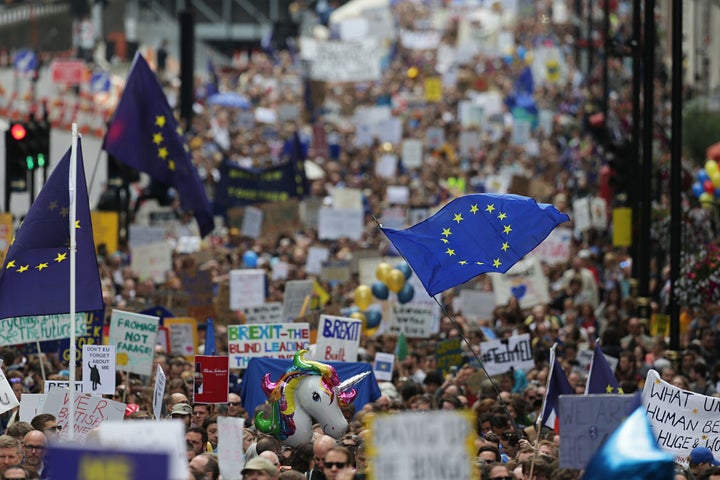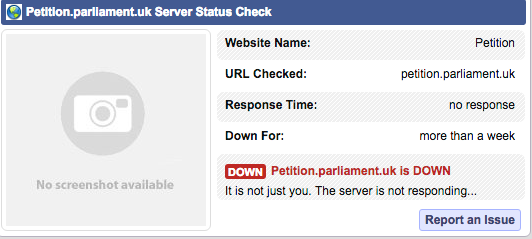A petition for a second EU Referendum signed by more than four million people has been turned down by the Government.
The petition was the biggest posted on the Government’s website, and crashed it within hours of being launched - but its demands have been turned down in a blow for disheartened Remain voters.
In total, 4,127,694 people have signed up to demand another referendum, after Britain voted to leave by 52% to 48%.

The petition - set up before the vote - called for the government to create a rule that would trigger another referendum if neither side had more than 60% of the vote, and there was a turnout of less than 75%.
The referendum result fulfilled both criteria: 4% separated Leave and Remain votes and turnout was 71.8%, still the highest in a UK-wide vote since 1992.
But an official response from the Foreign and Commonwealth Office has denied the request, saying the result had to be “respected”.
“This was a once in a generation vote and, as the Prime Minister has said, the decision must be respected.”
- Foreign and Commonwealth Office
The response said the European Union Referendum Act which established the referendum “did not set a threshold” for the result or for minimum turnout, and that the vote was “one of the biggest democratic exercises in British history”.
After rejecting the demands, it concluded: “We must now prepare for the process to exit the EU”.
Here’s the government’s response to the petition in full:
The EU Referendum Act received Royal Assent in December 2015. The Act was scrutinised and debated in Parliament during its passage and agreed by both the House of Commons and the House of Lords.
The Act set out the terms under which the referendum would take place, including provisions for setting the date, franchise and the question that would appear on the ballot paper. The Act did not set a threshold for the result or for minimum turnout.
As the Prime Minister made clear in his statement to the House of Commons on 27 June, the referendum was one of the biggest democratic exercises in British history with over 33 million people having their say. The Prime Minister and Government have been clear that this was a once in a generation vote and, as the Prime Minister has said, the decision must be respected.
We must now prepare for the process to exit the EU and the Government is committed to ensuring the best possible outcome for the British people in the negotiations.
The petition was set up by William Oliver Healey, an English Democrat activist who supported Brexit and was concerned the vote would be for Remain.
He has since said it was “hijacked” and tried to distance himself from the campaign after it attracted millions of Remain voters.
The interest in it temporarily crashed the Government’s petition website the day after the referendum:

The petition far surpassed the 100,000-signature threshold needed for it to be considered for a debate in Parliament, but after the Foreign and Commonwealth Office’s rejection, it looks like the conversation may be over.
But one constitutional expert has suggested that Brexit may need a second referendum, as well as Parliamentary approval, in order to go ahead.
Lord Lisvane, the former Clerk of the House of Commons said that it would be rational for MPs and peers to be consulted once an exit deal was hammered out between the Government and the EU.
